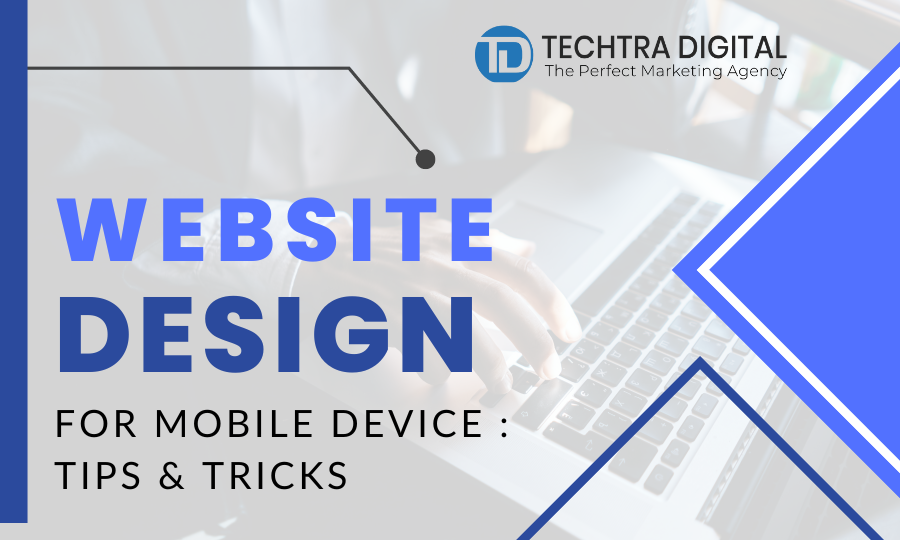A mobile-friendly website is essential in the modern world, as mobile devices account for the majority of internet traffic. The major audience for your website should be mobile devices, whether you’re developing a new one or updating an old one. We’ll go over several pointers and strategies in this article to assist you in creating a website that works and looks fantastic on mobile devices.
Consider the last time you were out in public and surrounded by strangers. When you turned to glance around, what were others doing? I’m willing to wager a shiny silver dollar that they were engrossed in their smartphone, checking social media, or surfing the web.
If you prefer not to depend solely on anecdotal data, a recent study indicates that there are approximately 257.3 million smartphone users in the United States alone. That represents almost 80% of all Americans.
All of this is just to say that to attract smartphone users to your blog or website—or to one you intend to launch soon—you must make it mobile-friendly. To put it another way, you to allow users of smartphones to read and navigate your website with ease from a mobile device. Please stop with the pinching, scrolling, and zooming!
Make it responsive
Think back to the last time you were in a foreign place while out in public. What were other people doing when you turned to look around? I’ll bet a bright silver dollar that they were absorbed on their smartphone, checking social media, or browsing the internet.
If you’d rather not rely entirely on anecdotal evidence, a recent study estimates that 257.3 million people in the United States alone use smartphones. This is over 80% of all Americans.
All of this serves to highlight the fact that in order to draw smartphone users to your website or blog—or to one that You need to make it mobile-friendly if you plan to launch shortly. The opposite way around is that you.
Use recommended size dimensions for mobile
Space can appear more constrained on a mobile device than in any other design setting. The best way to avoid disputes, later on, is to take size restrictions into account at the outset of your project.
Mobile screen resolutions will vary depending on the device, however, Statcounter data indicates that 360640 (an aspect ratio of 9:16) is now the most popular resolution. You may find out which particular devices your customers prefer using Google Analytics, and you should make sure your website design is flexible enough to accept changes.
For body copy, a font size of at least 16px is advised for mobile design. This can also change based on the typefaces used (certain fonts will be less readable at smaller sizes due to the way they are constructed 16px smaller than others).
Of course, images and other materials can be as large as the gadget permits. To preserve clarity, let the image’s subject determine how big or small it should be. Remember that you can zoom in on the subject and crop off extraneous background elements, like in the example above, rather than having to accommodate the entire image.
Last but not least, considering that touch displays are significantly less dependable at picking up user input than a mouse and keyboard, button size is crucial in the design of mobile-friendly websites. For the best accessibility, touchscreen buttons between 42 and 72px are advised, according to a study focusing on older users. Although there is no established size for headline typefaces, is to create a contrasting size, weight, and stylistic hierarchy in the typography. When in doubt, though, just use a mobile device to check the font sizes for yourself.
Include a viewport meta tag
Here’s what you should do if you’re the kind of person who follows orders without question:
Copy. Copy this HTML tag: meta name=′′viewport′′ content=′′width=device-width, initial-scale=1′′>.
Paste. For each page of your website, add the code to the HTML head> section.
Tada! You’ve finished. Give yourself a high five.
Then the justification. Depending on the device a web searcher is using, the viewport code gives search engines the knowledge they need to display the content’s size and scale appropriately.
Simply put, this meta tag offers excellent navigation across many devices so that website users may enjoy your material on both huge desktops and small six-inch mobile screens.
Consider the size of your font and buttons
Have you ever used a mobile device to visit a blog and needed to zoom in to see the content? How long did you continue to read? Most likely, it didn’t last very long.
On mobile websites, the font size must be at least 14px. The majority of readers will find it simple and trouble-free to read your material as a result. Keep the font size at 12px if you have any supplemental material.
The size of the design element is a concern not just when reading articles on a mobile device. It’s crucial to properly design any clickable buttons.
The last thing you want is for customers using mobile devices to struggle while choosing items or touching buttons. The ideal buttons are larger. Shoot
for buttons with a minimum 44px by 44px dimension.
This circle is 44 pixels in diameter.
Optimize for portrait orientation
Although using mobile websites in landscape mode with the device turned on its side is technically possible, portrait mode is far more popular. The two-handed mobile phone hold was made famous by the Blackberry in the 2000s, but with the growth of smartphones, customers now prefer a one-handed portrait mode.
For single-column layouts, the portrait mode’s narrowness is ideal. Site elements are arranged in this style in order from top to bottom. Although content is often aligned in the centre, switching between left and right justification can provide visual interest and give the appearance of a two-column layout. Additionally, grids can be used to present smaller items like icons and images, and picture carousels can be used to break up vertical scrolling by swiping horizontally.
There are ways to take use of the single-column layout in addition to coming up with inventive ways to break it up. Because social networking apps have conditioned mobile users to scroll for extended periods, website designers can space out content using padding and whitespace. This maintains the content’s readability and cleanliness while boosting interest through further scrolling.
Grouping related material into sections helps the user understand the overall goal of each section without having to read everything in-depth. This is especially useful given that approximately 79% of website visitors merely skim the text. Different coloured backgrounds make it easier to distinguish between these sections, while inventive section borders break up the boxy impression that these sections foster.
Compress your images and CSS
Did you know that, according to Kissmetrics, 47% of website visitors anticipate a site to load in under 2 seconds? And if the loading time goes longer than three seconds, 40% of visitors will leave the page.
Flash has already been avoided, and annoying components like pop-ups have been removed, but what about graphics and CSS? Due to the large amount of server space that images and CSS use, they take longer to load. However, keeping graphic design components that enhance the mobile user experience is preferable.
Instead of omitting images or style sheets, the approach is to compress them. When you reduce the size of your image files, they load more quickly without sacrificing the quality of your site.
To give customers a seamless surfing experience, it is crucial to building websites for mobile devices. The design of mobile websites must take into account responsive design, straightforward layouts, obvious navigation, optimised pictures, and testing. To guarantee your website looks amazing and works effectively on whatever screen size, keep these pointers in mind as you design it for mobile devices.




